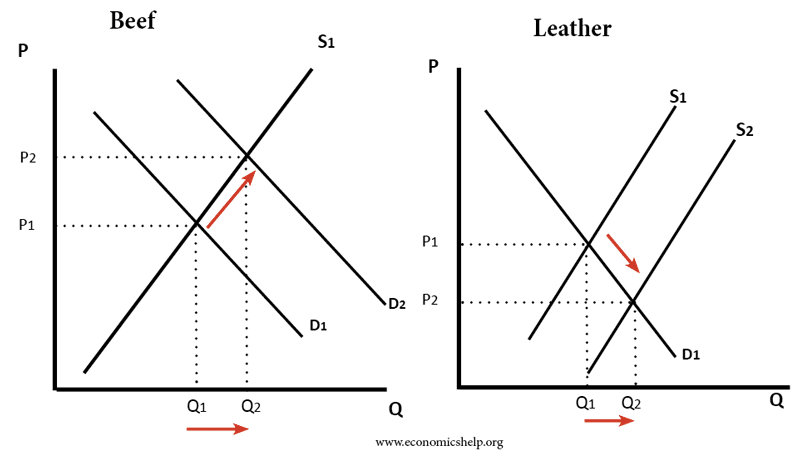Joint supply occurs when two goods are produced together from the same origin / raw material.
Examples of joint supply
- If you grow wheat, you get both wheat and straw.
- Producing refined flour creates bran as a byproduct. Bran can be used as fibre ingredient or using in compost
- If you increase the supply of beef (keeping more cattle) you will also increase the supply of leather (a byproduct of beef)
- If you decrease the supply sheep, there will be a fall in both mutton and wool.
- If you increase supply of petrol, you will get other byproducts of refining oil, such as butane.
Diagram of joint supply

- With more cows in production, there will be also a shift to the right in the supply of leather.
By-product
Joint supply usually arises because producing a good, creates a by-product. Refining oil, created gasoline (petrol) as a by-product – with the advent of the petrol engine, the by-product became more desirable than the initial product of kerosene.
Alfred Marshall on Joint supply
“We may now pass to consider the case of joint products: i.e. of things which cannot easily be produced separately; but are joined in a common origin, and may therefore be said to have a joint supply, such as beef and hides, or wheat and straw.
As there is a joint demand for things joined in a common destination: so there is a joint supply of things which have a common origin.”
Marshall, Alfred. Principles of Economics (1890) Book five, chapter six.
Related
